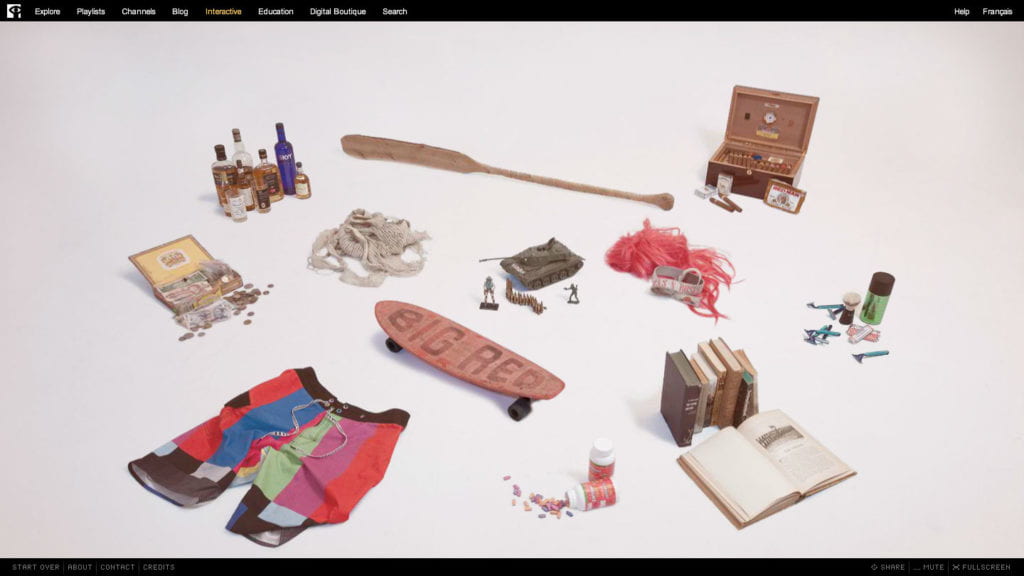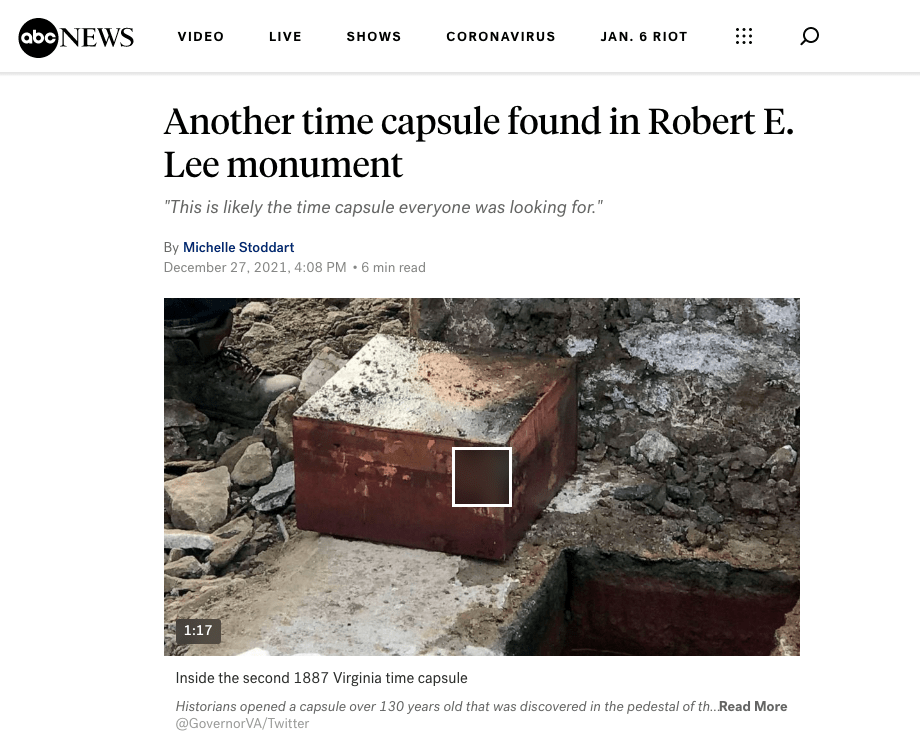Time Capsule

Part 1
Brief
This assignment is about looking around you, celebrating and telling stories about objects you own and that hold personal meaning for you. Select an assortment of objects, and tell us anecdotes or stories of or around these objects using any media that inspires you or digital social platforms if it suits you as your medium of expression. Keep in mind that you will eventually use the objects you choose for your next project, which involves putting them into a time capsule for people in the future to discover, so make sure you think carefully on which stories around which objects you’d like to tell. Think about how you’d tell the stories of your objects – would you create a video, photos, sketches, Twine narratives, or would you upload images or videos on Instagram or Youtube, use geofilters on Snapchat, upload audio clips on Soundcloud or Audiogram, or deploy chat bots on Twitter? Upload the link to your narrative to the process blog and write about the process of selecting objects and writing their stories there.
Some links that may help you think through this project:
- The Things We Keep, Christian Svanes Kolding
- First Photo Here
- Soldier Brother, Kaitlin Jones & Alicia Smith
- Bread
- Humans of New York

Tasks
- Pick several objects (it could be three, five, but probably not more than seven or eight – you need to be able to manage the project!)
- Come up with meaningful stories around these objects and try creating a narrative using a popular social media platform or any app that fits your needs.
- Upload the link to your story (or if it is ephemeral, document your work thoroughly), and write a reflection on your process blog about the process of selecting and coming up with stories for what you chose.
GRADING CRITERIA FOR PART 1
These are a few general criteria to keep in mind for grading:
- The quality of expression: how well you’re able to craft engaging, interesting and/or entertaining narratives about your objects.
- The level of media experimentation: how well you were able to creatively explore different media and their affordances to serve your objects’ narratives.
- The quality of reflection and documentation: how in-depth you were able to document the process and the depth of your reflection on your process, reflected on your blog.
Part 2
After you have thought about the contents of your Time Capsule, think about what you would actually like your Time Capsule to look like. What, if any, should its enclosure and interface be? Spend some time sketching out (as roughly as you want) what aesthetic, interface, materials, shape, details, signage, wording, clues, etc. your Time Capsule needs to have. Paper prototype one out of cardboard, or flat paper, anything easy just to give a clearer idea to your audience.
This is an opportunity to become acquainted with the laser cutter and other digital fabrication tools, and to exercise your skills working with paper crafting and blueprinting – you may do blueprinting in a CAD tool if you’re comfortable with it. Digital fabrication tools are a great way to rapidly prototype something as well, if you have access to some. Try making a couple of low-fi maquettes of your Time Capsule taking advantage of different materials and different prototyping tools or different materials you have collected.
Similarly to your explanation of its contents, in your reflection for this week talk a bit about your design choices and why you have made the decisions you made, either in a written paragraph or audio narration over visuals.

Tasks
- Ideate, sketch, and prototype several ideas for what shape and form your time capsule will take.
- Create your time capsule using any 3-D fabrication technique and embellish it as you’d like. Use this opportunity to experiment with different materials and tools.
- Take photos of your capsule from all angles and write a reflection on your process blog about how the various objects you chose fit into the capsule.
GRADING CRITERIA FOR PART 2
These are a few general criteria to keep in mind for grading:
- The thoroughness of your process: how well and fearlessly you ideated on your design and thought through the possible interaction it would spur once found. This process should be reflected in your sketches and blueprint for a physical model.
- The level of experimentation with materials and tools and the overall cohesion of the form your capsule took, as it pertains to the story you crafted and the theme you have chosen to follow.
- The quality of reflection and documentation: how in-depth you were able to document the process and the depth of your reflection on your process, reflected on your blog.
Part 3

Fast forward 125 years into the future… and the current inhabitants of Earth, just made a shocking discovery: your Time Capsule. What do you think will happen once your time capsule is unearthed, many many years from now? What will the inhabitants do or think?
Tell the story in a photo-essay, stop-motion animation, short movie or two-page spread comic book sequence (or storyboarding if you prefer). Feel free to play with different media, color vs. black/white, different styles, tools and techniques – you can do this on paper or in a digital tool like Illustrator, or mix both, bringing in hand-made sketches and refining them digitally. You may wish to review this video lecture using Scott McCloud’s Understanding Comics to help build a better understanding of what some of the possibilities for the assignment are.
Some other examples of photo essays (you may note that these are mostly based on themes or events, rather than fictional narratives of protagonists, but all attempt to tell a story about their subjects) or animations:
- Things To Do In The Belly of The Whale Animated Poetry
- Stop Motion Animation Using Paper Cut-Outs
- Tin Foil Man Animation
- Waves of Emotion Animation
- The Edges of Things Animation
- Tomas Munita, Walking in War’s Path
- Suzanne Daley, On The Island of Lesbos
- The Bitter Southerner
- Gordan Park’s A Harlem Family
- Raghu Rai, Bhopal Gas Trajedy
- Corner Store in LA
- Kabul Portraits
Tasks
- Create or pick a protagonist/perspective to center your narrative and story around. Who is going to be telling your story?
- Storyboard and sketch several ideas for a comic-book spread, or animation, or photo-essay or other media you could use to represent your story.
- Create the visual narrative and make a digital file to share!
- Upload your narrative online and document/reflect on your process on your blog.
GRADING CRITERIA FOR PART 3
These are a few general criteria to keep in mind for grading:
- The thoroughness of your process of constructing your narrative: how well you built your narrative, the level of detail you chose or did not choose to include as well as how easy your story is to follow.
- The level of experimentation with materials and tools you brought to your story. Which media and process did you choose to use to represent your final story? How well do your media, tools and materials speak to your Time Capsule, theme and the story you crafted?
- The quality of reflection and documentation: how in-depth you were able to document the process and the depth of your reflection on your process, reflected on your blog.
The entire Time Capsule assignment accounts for 25% of your final grade for the course, and therefore each component of this assignment accounts for approximately ~8% of your grade.